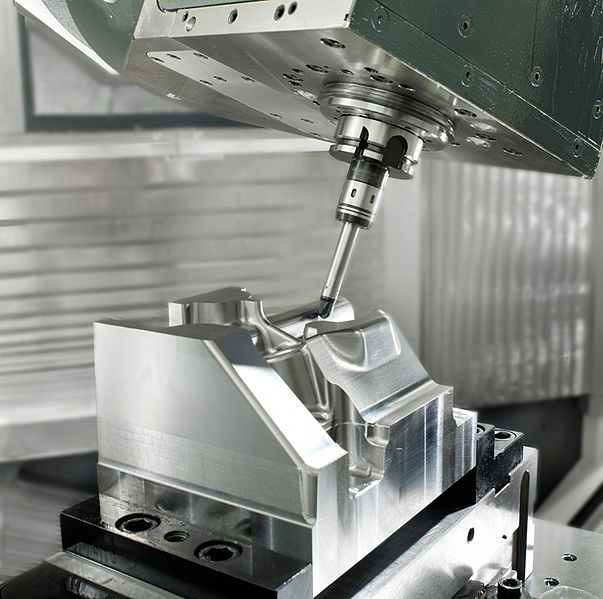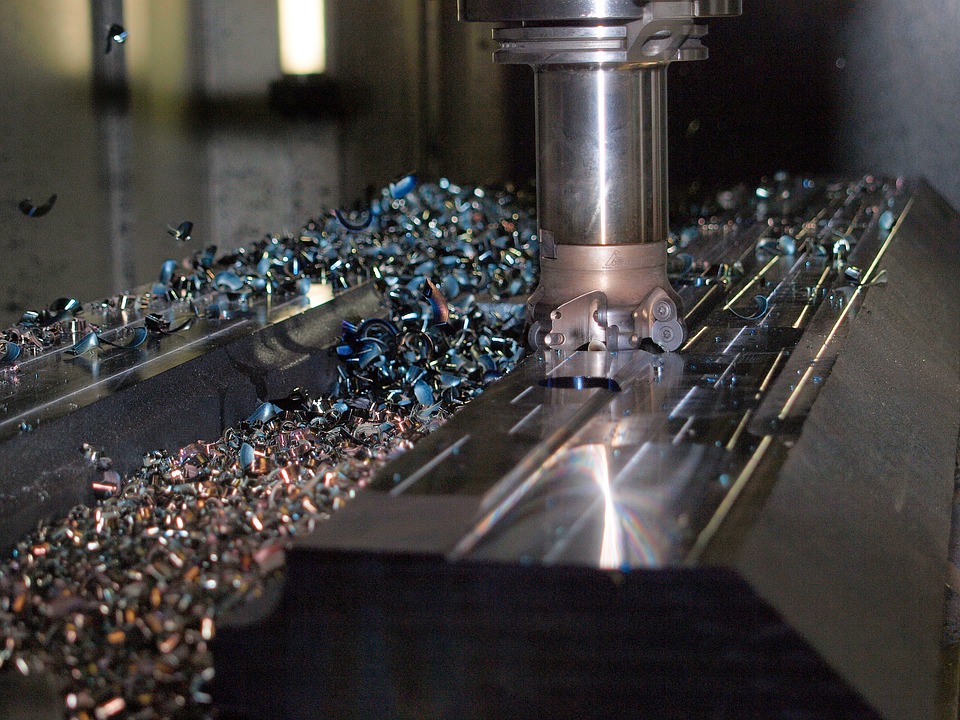What started as a high-end machining technique focused on machining complex shapes has now transitioned to a nearly industry standard technology to optimize the CNC Milling industry. 5-axis machining has veritably reinvented how we think about milling parts. Machining with 5-axis machines allows us to cut costs on machining time, achieve higher precision on complex parts, and overall improve our production process. It can even change how we design. Have you changed your design criteria around this new tool or are you still stuck in the past?
5-Axis Machining and Modern Manufacturing
The greatest change brought into the CNC and machining industry in recent history has been computerization and numerical control. With these capabilities came the transforming job of machinists and how engineers design for manufacturability. Computer controlled machines brought greater capabilities and greater precision, but after this innovation the limitation became mechanical. The need for greater mechanical precision and capability to mill complex shapes birthed the 5-axis machine and it was this quest for an improved capability that lead to its rise. As you likely realize, 5-axis machining used to only for expensive high-toleranced parts, but all that has changed.

Due to the reduced need to change fixtures, the ability to achieve great precision, the coupled ability with CAD to create flowing precise parts, and the reduction in price, 5-axis machining is slowly becoming the standard for milling manufacturing. In some cases, utilizing 5-axis machining is even cheaper than a traditional 3-axis machine.
Backpedaling slightly to 5-axis operation, 5-axis machines gain two rotational axis over traditional 3-axis machines. This allows for fewer fixture changes during machining and greater precision in complex parts. It also allows for numerically controlled machines to create the flowing even generative designs imagined in modern CAD tools. Due to the time savings of fewer fixture changes and a more “hands-off” approach for the machinist, it’s often cheaper for shops to use 5-axis production than more primitive machines.
The manufacturing world is changing to adapt to the modern need to produce innovative computerized design.
These changes have brought 3D printers and even more substantially, 5-axis machines. Now, as mechanical engineers, we often only deal with designs and many rarely crossover directly to machining and manufacturing. 3D printers excited us because it brought prototyping manufacturing to our desktops, but 5-axis machines seem to only benefit machinists, right? This is somewhat true except for one major aspect of our jobs, design for manufacturability.
Rethinking Our Design for Manufacturability Workflow
Our workflows and the way we design parts is wholly rooted in our understanding of how a part is going to be manufactured, or at least it should be. While this methodology is good, our mindset can often lag behind improvements in the manufacturing industry. It’s hard to adjust our ingrained aversions in mechanical design after all. We have to realize now, however, that with the widespread adoption of 5-Axis machines, the way we think about manufacturability has to change. According to a survey from the Modern Machine Shop conducted in late 2015, 38% of the top machine shops readily used 5-axis machines and nearly all shops had at least 4-axis capabilities. Top shop owners also recognized that even simple parts can be manufactured better on 5-axis machines, according to the American Machinist.

Studies of recent growth trends in the manufacturing industry have proven the significant rise of 5-axis machining in recent years. Looking back at history, many questioned why switching from manual machines to CNC machines was a good idea and thus were subsequently left in the dust. As engineers, we must recognize that 5-axis is becoming industry standard and adjust our design considerations accordingly.
With all of this said, 5-axis isn’t the cure-all for modern manufacturing at the present state, it is simply a catalyst towards to the ability to innovate in our designs further. The goal of rethinking our DFM methodologies is to allow ourselves to innovate further in the design process and not be held back by past ideas no longer relevant to our industry.
After rethinking our workflow and understanding that 5-axis machining is a realizable production technique for even simple parts, we can start to take advantage of the improvements that this technique brings – of which there are many.
The Proof is in the Axis
The added rotational axis brought through 5-axis machining brings benefits far outreaching part tolerances. 5-Axis.org recently ran a business analysis in regards to machining of a standard 3-axis part against the same part on a 5-axis machine. On a standard 3-axis machine, the part required 5 hours and 30 minutes of setup time and nearly 20 minutes of machining time. Moving the operation to a 5-axis machine, they were able to create the same part with only 1 and a half hours of setup and 13.5 minutes of machining. With a standard $80/hr rate for the machine shop, that saves you as the engineer $320 per part. Extrapolating further to the production of 100 parts a week, that’s $32,000 in savings each week simply by using a 5-axis machine. Many shops recognize this and are making the switch even if the machines are slightly more expensive.
The proof really is in the additional axis. The added flexibility brought about by not having to build as many custom fixtures or make changes in the middle of an operation brings benefits to every person in the production cycle.
Beyond simply cost, 5-axis machining also allows us as engineers to design more complex parts. Modern CAD allows us to create complex and flowing parts that may be perfect for our application but hard to create in actuality. 3D printing promises to take us in that direction eventually, but right now it remains sparingly useful for widespread part production. 5-axis machining is the more practical and present approach to dealing with the manufacturability of complex designs. By actually being able to realize our complex designs, we can create a product that performs better – maybe even with fewer components. This is another manufacturing technology at your disposal right now that will only grow in future use.
Through 5-axis machining, we can design and create shapes with greater complexities of parts than ever before at higher speeds and lower costs.
Moving Forward with Design
Innovation is at the heart of engineers and at the heart of the future of making things. Realistic designs in the engineering space are starting to look futuristic. The capabilities of manufacturing are rapidly advancing and production prices are being brought down. Even in our current engineering climate, 5-axis machining is a very real tool we have at our disposal. Without even understanding that 5-axis is only going to grow in manufacturing utilization, we have to rethink how we design today with this new tool in mind.
It might have snuck up on you fast or maybe you saw it coming, but now is the time to adopt 5-axis machining into your design for manufacturability methodology. Innovation won’t wait.



Add comment
Connect with: Log in
There are no comments